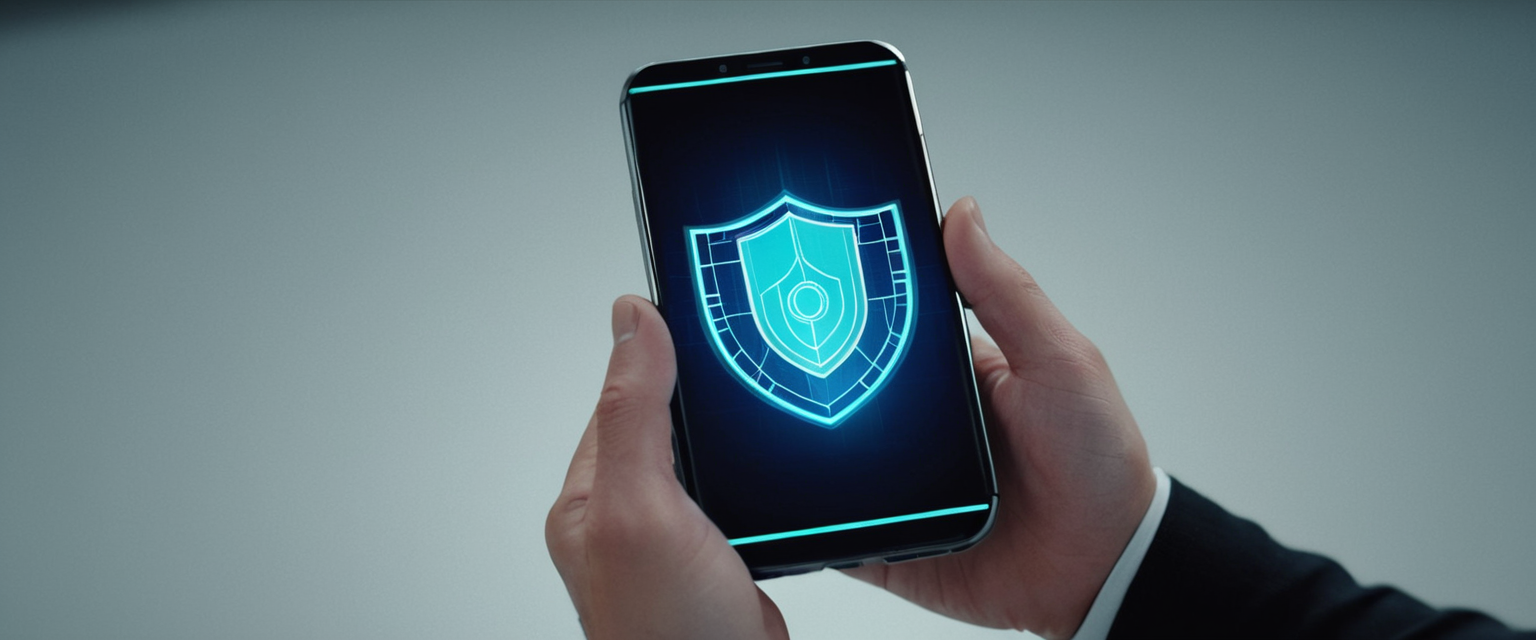
This comprehensive report examines the critical practice of checking mobile phones for malware, exploring the multifaceted landscape of mobile security threats, detection methodologies, platform-specific considerations, and remediation strategies. Mobile devices have become primary targets for cybercriminals due to their ubiquity and the sensitive personal and financial data they contain, with attacks on mobile devices rising 50 percent in recent years. The report addresses how individuals and organizations can effectively identify malware infections through symptom recognition, technical detection methods, and specialized security tools. Key findings reveal that while both Android and iOS devices face unique security challenges, detection approaches differ significantly between platforms due to architectural differences. The report further emphasizes that proactive monitoring, regular security updates, and understanding emerging threats like zero-day vulnerabilities are essential components of comprehensive mobile security practices. By synthesizing current detection techniques, platform-specific guidance, and best practices for malware identification and removal, this analysis provides actionable guidance for protecting mobile devices against evolving threats.
Understanding Mobile Malware: Definitions, Types, and Attack Vectors
Mobile malware represents one of the most significant cybersecurity challenges facing users in today’s hyperconnected world. Malware is any software designed to damage or compromise your device in some way, whether stealing personal data from your phone or installing unwanted programs. Understanding what constitutes malware, how it differs from other threats, and the various forms it takes is fundamental to recognizing when your device might be compromised. The distinction between viruses and malware, though often used interchangeably in casual conversation, carries important technical implications for how threats operate and persist on mobile devices.
Viruses are specific kinds of malware that harm files on an infected device in order to spread further. However, due to the architectural design of modern mobile operating systems, true viruses that self-replicate and spread between devices are extremely rare on smartphones and tablets. Instead, malware includes spyware (software used for tracking web browsing habits), adware (software that displays ads on-screen without consent), and ransomware (encrypting files until a ransom is paid). This distinction matters because it affects how malware behaves on your device and the symptoms you might observe. A ransomware infection will immediately notify you of the attack through encryption notices, while spyware operates silently in the background, making detection considerably more challenging without proper security monitoring tools.
Mobile malware operates through several primary distribution channels that users should understand to better protect themselves. Mobile phishing attacks can be similar to computer phishing attacks, where a bad actor can send you a text message — also known as smishing — or an email that contains an attachment or a link to download a file. Once users click on these malicious links, they may inadvertently trigger downloads of malicious code that installs on their devices. Additionally, downloading an app to your mobile device from third party sites can put you at risk of encountering malicious apps. While verified apps pre-vetted through official app stores provide greater security assurance, users who download directly from developers through sideloading or from third-party app stores significantly increase their infection risk. Browser exploits take advantage of vulnerabilities in your web browser or software launched by the browser such as a Flash player, PDF reader, or image viewer, and simply by visiting an unsafe web page, you can trigger a browser exploit that can install malware.
Recent security research has identified concerning trends in mobile malware distribution patterns. Google’s analysis found over 50 times more malware from internet-sideloaded sources than on apps available through Google Play. This dramatic difference underscores the critical importance of app source selection when evaluating infection risk. Furthermore, rooted or jailbroken devices are much more susceptible to viruses and malware because users can avoid Apple and Google application vetting processes that help ensure users are downloading virus-free apps. The security protections built into modern mobile operating systems function as the first line of defense against malware, and deliberately circumventing these protections exponentially increases vulnerability to compromise.
Recognizing the Signs and Symptoms of Mobile Malware Infection
Detecting malware on your phone requires understanding the behavioral changes and performance anomalies that often accompany infection. The manifestation of malware symptoms varies considerably depending on the type of threat, but recognizing these warning signs enables users to take prompt remedial action. Device symptoms and behavioral changes provide the most direct indicators that malware may be present on a mobile device. Alerts about a virus or an infected device, anti-virus software you use no longer works or runs, a significant decrease in your device’s operating speed, a significant unexpected decrease in storage space on your device, and your device stops working properly or working altogether represent the primary device-level indicators of potential compromise. These symptoms suggest that malware is actively consuming system resources or has disabled security protections.
Beyond device-level symptoms, browser behavior often reveals malware presence through distinctive patterns. Pop-up ads and new tabs that won’t go away, unwanted Chrome extensions or toolbars that keep coming back, your browsing seems out of your control and redirects to unfamiliar pages or ads, and your Chrome homepage or search engine keeps changing without your permission all represent browser-based indicators of infection. Aggressive adware can even go so far as to show you ads on your lock screen, trigger video and audio advertisements while the phone is asleep, and display out-of-app ads that interfere with other applications. These browser anomalies typically indicate that adware or potentially unwanted software has compromised browser settings, redirecting traffic to malicious domains or injecting advertisements for financial gain.
Another critical category of malware symptoms involves unauthorized communications and account activity. Your contacts have received emails or social media messages from you, but you didn’t send the emails or messages represents a particularly concerning indicator because it demonstrates that malware has gained sufficient access to impersonate you and exploit your contact list. Additionally, if someone in your contact list reaches out about a suspicious text they received from you, it’s possible your device may have malware, with compromised mobile devices able to send messages on their own, making this a key red flag.
Performance-related symptoms provide additional evidence of malware infection, though these indicators must be evaluated carefully since aging devices naturally experience performance degradation. Battery drains faster than usual represents one of the most commonly reported malware symptoms, as malware programs run in the background while you aren’t actively using your phone which can cause a decrease in your phone’s battery life. If your data usage surges but you’re using your mobile device normally, you may have malware, as the malicious software sends data from your phone to a remote server. Slow performance and apps crashing or running slowly could be a possible sign that you may have malware on your phone. Additionally, if your phone’s battery life abruptly declines this could be a signal that your phone has malware, and sometimes if a mobile phone is running a number of programs or downloading a significant amount of data, it can overheat, with malware potentially running many processes in the background that could make your phone become hot to the touch.
Financial anomalies represent another important category of malware symptoms that warrant immediate investigation. If your phone bill includes unfamiliar charges that you never approved, a virus could be to blame. Certain malware types, particularly chargeware, are specifically designed to make unauthorized purchases or charge premium services without user consent. Chargeware is malware that has the ability to charge a person money without providing clear notification beforehand or asking for consent. These unauthorized charges often appear as premium SMS services or unauthorized in-app purchases that the infected device makes without legitimate user authorization.
Platform-Specific Detection Considerations: Android Versus iOS
The approach to checking for malware must account for fundamental architectural differences between Android and iOS platforms, as these systems employ different security models that influence both infection risk and detection methodology. Understanding these platform-specific characteristics enables users to implement appropriate detection strategies tailored to their device type and the threat landscape unique to each ecosystem.
Android-Specific Detection and Analysis
Android devices face a more diverse malware landscape due to the platform’s open architecture and the diversity of manufacturers and ROM versions in circulation. Android malware detection can be applied in android OS to detect an application is harmful or not using several methods including pattern matching, K-means algorithm and kNN algorithm, naïve Bayesian classification algorithm, machine learning, and feature selection. The fragmented nature of Android updates means that many devices remain unpatched for extended periods, creating persistent vulnerability windows that attackers actively exploit.
Google Play Protect represents Android’s primary built-in defense mechanism, and verifying its status should be the first step in any Android malware check. Google Play Protect runs a safety check on apps from the Google Play Store before you download them and checks your device for potentially harmful apps from other sources, warns you about potentially harmful apps, may deactivate or remove harmful apps from your device, and warns you about detected apps that violate the Unwanted Software Policy by hiding or misrepresenting important information. However, Google Play Protect is on by default but you can turn it off, and for security you should always keep Google Play Protect on. Enabling the enhanced harmful app detection feature becomes particularly important for users who install applications from outside the Google Play Store. If you’ve downloaded apps from sources outside of the Google Play Store, turn on Improve harmful app detection.
Checking for Android device and security updates forms the second critical component of malware verification. Most system updates and security patches happen automatically, but to check if an update is available, open your device’s Settings app, tap Security & privacy, then System & updates, and for security updates tap Security update. If you installed a modified (rooted) version of Android on your device, you lose some of the security protection provided by Google, and to restart the security features provided by Google, you should reinstall the original Android operating system on your device. The November 2025 Android Security Bulletin underscores the critical importance of maintaining current patches, as the most severe vulnerability could lead to remote code execution with no additional execution privileges needed, with user interaction not needed for exploitation. The November 2025 Android Security Bulletin contains details of security vulnerabilities affecting Android devices, with a critical security vulnerability in the System component identified as CVE-2025-48593 that could allow attackers to execute arbitrary code on the device without any user interaction.
Identifying and removing untrusted applications represents the third key step in Android malware detection. Users should systematically review installed applications, paying particular attention to those downloaded from non-Google Play sources. On your Android phone or tablet, open the Settings app, tap Apps & notifications, then See all apps, tap the apps you want to uninstall and select Uninstall, then follow the on-screen instructions. Malware frequently disguises itself as legitimate applications or hides within apps that appear to serve a genuine function but contain malicious code. Recently installed applications that preceded the onset of suspicious device behavior warrant particular scrutiny, as malware infections often correlate temporally with new app installations.
The fourth recommended step involves conducting a comprehensive security checkup of your Google Account. On your Android phone or tablet, open a web browser like Chrome, go to myaccount.google.com/security-checkup, and to fix any security issues in your account, follow the steps. This review extends beyond the device itself to encompass account-level security indicators that might reveal compromise, including suspicious login locations, unauthorized recovery email or phone number changes, or unexpected account activity.
iOS-Specific Detection Characteristics
iOS presents a fundamentally different security landscape from Android due to Apple’s more restrictive ecosystem model and the architectural constraints imposed on third-party applications. iOS is not susceptible to viruses, and if you experience strange pop-ups or strange messages in Safari, you should delete your browser history and website data by going to Settings, Safari, and tapping Clear History and Website Data. The architectural security features of iOS make traditional malware infections significantly more difficult, though not impossible, to achieve.
It is possible, though rare, for Apple devices to get malware, and Apple does offer a tool: Safety Check on iPhone works to keep you safe. Safety Check represents Apple’s dedicated security review feature available on iOS 16 and later devices. Safety Check on iPhone allows you to quickly stop sharing your information, or to review and update sharing with individual people and apps, check whom you’re sharing information with, review and change devices connected to your Apple Account, reset system privacy permissions for apps, change your iPhone passcode, and change your Apple Account password. This comprehensive review tool helps users identify unauthorized access to their accounts and remediate compromised sharing settings.
However, users should understand the limitations of iOS security verification capabilities. It is not possible to scan for viruses in iOS, as there is no virus scanner available, either built into iOS or as a third-party app in the App Store. This limitation stems from Apple’s restrictive app sandbox architecture, which prevents third-party security applications from accessing the system-level information necessary to conduct traditional malware scans. Despite this architectural constraint, suspicious pop-ups or unexpected prompts claiming malware detection often represent scareware tactics rather than legitimate security warnings. Every app you have on your iPhone can only work in its own closed area, which means NO third-party apps have access to important and vulnerable files or areas in iOS.
Despite these architectural protections, users should implement preventive hygiene practices to minimize infection risk on iOS devices. Delete your browser history and website data by going to Settings, Safari, and tapping Clear History and Website Data represents a straightforward method for removing potentially compromised browsing data. Additionally, users encountering suspicious content should recognize that there is nothing that can be downloaded from the internet that will install on your phone, and if you’ve seen a pop up that claimed you had malware, it’s just an advertisement trying to scare you into using a service that claims it will protect your device.
Detection Techniques and Malware Analysis Methods
Beyond built-in platform security tools and basic symptom recognition, multiple advanced detection methodologies exist for identifying malware on mobile devices. Understanding these technical approaches illuminates how security professionals and sophisticated detection systems identify threats that may evade casual user observation.
Signature-Based Detection Approaches
Signature-based detection works by maintaining a database of known malware signatures (unique patterns or characteristics of malicious programs), and when a file matches one of these signatures, it’s flagged as malicious. This approach has been foundational to antivirus software for decades and remains widely deployed. Signature-based detection works well for known malware variants like older viruses or worms but cannot detect new or modified malware, including polymorphic malware, and can only identify the existing malwares and fails against the unseen variants of malwares, requiring immediate update of malware signatures. The fundamental limitation of signature-based approaches is their reactive nature—new malware variants must be discovered, analyzed, and added to signature databases before protection becomes available, leaving a window of vulnerability for novel threats.
Behavior-Based and Anomaly Detection Methods
More sophisticated detection approaches focus on identifying malicious behavior patterns rather than relying solely on signatures. Behavior-based detection identifies malicious behavior by flagging programs that suddenly access sensitive files or modify system settings without permission. Behavior-based detection is effective for detecting zero-day and new and unknown malware because it doesn’t rely on prior knowledge of the malware. However, this approach carries the limitation that behavior-based detection can result in false positives when legitimate behavior is flagged.
Anomaly-based detection identifies deviations from normal system behavior to detect potential threats, for example if data flow or resource usage deviates from established baselines, it may indicate malicious activity. Anomaly-based detection is effective against advanced malware that mimics legitimate activities but requires baseline data and may lead to false positives. Andromly is a behavior-based malware detection technique that continuously monitors different features of the device state such as battery level, CPU usage, and network traffic, with measurements taken during running and supplied to an algorithm that classifies them accordingly. Similar tools like CrowDroid and AntiMalDroid are two different anomalies based tools used for malware detection in Android devices, with the first depending on analyzing system calls’ logs while the latter analyzes the behavior of an application and then generates signatures for malware behavior.
Heuristic and Machine Learning-Based Detection
Heuristic detection methods apply rules and algorithms to identify suspicious behavior patterns even for previously unknown malware. Heuristic-based detection applies rules or algorithms to identify suspicious behavior or file patterns, even if the malware is new. Heuristic-based detection detects new variants of malware that traditional signature-based detection methods might miss but may not catch very advanced malware and can sometimes falsely identify legitimate files as threats.
Machine learning and artificial intelligence represent the frontier of mobile malware detection. Machine learning and AI-based detection uses artificial intelligence to study massive amounts of data about malware and normal system behavior, learning to spot patterns or anomalies that indicate malicious activity, even for new types of malware, and getting smarter over time as it learns from new data. Machine learning and AI-based detection can detect unknown and constantly evolving threats and gets smarter over time as it learns from new data. However, these advanced approaches require substantial computational resources and data volumes to function effectively, which may limit their practical deployment on resource-constrained mobile devices.
Sandboxing and Emulation-Based Analysis
Sandboxing techniques run a suspicious file in a safe, isolated sandbox environment where it can’t harm the actual computer system, with the sandbox monitoring the file’s behavior to see if it does anything malicious, like trying to delete files or steal data. DroidScope is an emulation based tool used to dynamically analyze applications based on Virtual Machine Introspection, monitoring the whole system by being out of execution environment, hence malwares will not be able to detect existence of anti-malware installed on the device. Android Application Sandbox (AASandbox) detects the malicious applications by using static and dynamic analysis, with the effect of the tool limited to sandbox for security reasons as it dynamically analyzes user behavior such as touches, clicks and gestures. The advantage of sandbox approaches lies in their ability to observe malware behavior in detail without risking the actual device, though sandboxing techniques are resource-intensive and some sophisticated malware can detect when it’s being sandboxed and behave normally to avoid detection.
Data and Taint Analysis Methods
Advanced technical approaches examine how sensitive data moves through applications to identify potential exfiltration attempts. Taintdroid is a tool that tracks multiple sources of sensitive data and identifies the data leakage in mobile applications, with the tool labeling sensitive data and following the data moving from the device. Taintdroid provides efficient tracking of sensitive data, unfortunately, it does not perform control flow tracking. DroidAPIMiner identifies the malware by tracking the sensitive API calls.
Implementing Systematic Malware Checking Procedures
Successfully checking your phone for malware requires a methodical, step-by-step approach that addresses multiple potential infection vectors and verification approaches. This systematic procedure helps ensure comprehensive assessment of device security status.

Initial Assessment and Symptom Evaluation
The first stage in checking for malware involves carefully evaluating whether your device exhibits any of the recognized malware symptoms. Take time to reflect on recent device behavior changes, noting whether performance degradation, battery drain, unusual charges, or unexpected network activity coincides with specific events like new app installations or suspicious link clicks. Document observed symptoms, including when they began and any patterns you notice in their occurrence. This documentation helps establish whether symptoms represent genuine malware indicators or merely normal device aging and performance variation.
Verification of Built-in Security Features
For Android users, the second critical step involves confirming that Google Play Protect remains enabled and configured appropriately. Navigate to the Google Play Store application, tap the profile icon in the top right corner, select Play Protect Settings, and verify that the Scan apps with Play Protect option appears enabled. If you have downloaded applications from sources outside the official Google Play Store, ensure that the Improve harmful app detection option is also activated to enhance protection for sideloaded applications. This enhanced detection setting provides additional scrutiny of applications obtained from unofficial sources.
Following Google Play Protect verification, check for pending system updates that address known security vulnerabilities. Open the Settings application, navigate to System, then select System Update to check for available patches. The device should be configured to install security patches automatically, but manual verification ensures no critical updates have been delayed or overlooked. Reviewing the security patch level date provides an indicator of how current your device’s security protections remain. Devices receiving security patches dated within the most recent one to three months generally maintain relatively current protection against known vulnerabilities.
Systematic Application Review
The third procedural step involves methodically reviewing all installed applications, paying particular attention to recently added programs and applications sourced from non-official stores. Open Settings, navigate to Apps & notifications, then select See all apps to display the complete application inventory. This comprehensive listing reveals all installed applications, including system apps and background services that may not appear on your home screen. Examine recently installed applications critically, questioning whether their presence aligns with intentional downloads or whether they may have been installed without explicit permission.
Look for applications with generic or unusual names that don’t correspond to known publishers. Legitimate applications typically display recognizable publisher names, user ratings, and download counts. Any application that appears suspicious, unfamiliar, or potentially misrepresenting its function should be considered for uninstallation. Most malware attempts to minimize user awareness by disguising itself with innocuous names or by bundling itself with legitimate applications that users intentionally install. Remove any applications you don’t actively use or recognize, particularly prioritizing the removal of applications from non-official sources.
Browser Cache and History Clearing
Clear your browser cache and browsing history, as these locations may contain malicious files or evidence of compromise. For Android devices using Chrome, open Settings, search for Apps, locate Chrome in the app listing, navigate to Storage, and select Clear Cache in the Storage menu. For iOS devices, go to Settings, select Safari, and tap Clear History and Website Data, confirming that you want to clear history, cookies, and browsing data. This action will log you out of any websites where you were previously signed in, a minor inconvenience justified by the security benefit of removing potentially compromised browsing artifacts.
Account Security Review
Conduct a comprehensive review of your Google Account security status by visiting myaccount.google.com/security-checkup from a browser on your device. This review process examines multiple security indicators including your account recovery options, recently accessed devices, active sessions, and authorized third-party applications. Google’s security checkup tool guides you through potential remediation steps if security issues are identified. Pay particular attention to whether recovery phone numbers or email addresses match your current information, as malware sometimes modifies these recovery options to maintain access or prevent legitimate users from regaining account control.
Factory Reset as Final Remediation
If comprehensive investigation and the steps outlined above fail to resolve suspected malware issues, a factory reset represents the most reliable remediation approach for most users. Simply restarting your phone won’t remove malware from your device but restoring your device to its factory setting will. However, before you factory reset your phone and wipe all your data, let’s try three simple steps first. A factory reset completely erases all user data and applications, restoring the device to its original condition as it came from the manufacturer.
Before implementing a factory reset, ensure that you have created current backups of important data. Cloud-based backup options like Google Drive, iCloud, or other cloud storage services provide convenient backup solutions. To perform a factory reset on Android devices, navigate to Settings, search for Factory reset, and follow the on-screen instructions. The exact procedure varies slightly between manufacturers and Android versions, so consulting your device manufacturer’s support documentation provides device-specific guidance. Important considerations include ensuring that your device has sufficient battery charge before beginning the reset process, as interruption of the reset procedure can leave your device in an unusable state. Additionally, you will need to re-enter credentials for all applications and accounts after the reset completes, including email passwords and app login information.
Advanced Security Tools and Antivirus Applications
While built-in platform security features provide foundational protection, third-party security applications offer additional detection capabilities and continuous monitoring that may prove valuable for users with specific security concerns.
Android Antivirus and Security Solutions
Multiple certified antivirus solutions provide comprehensive malware detection and protection for Android devices. In September 2025 we evaluated 13 mobile security products for Android using their default settings, with products achieving certification including Avast Antivirus & Security, AVG Antivirus Free, Avira Antivirus Security, Bitdefender Mobile Security, F-Secure Total Security & VPN, Kaspersky Premium for Android, McAfee Mobile Security, Norton Norton 360, Protected.net TotalAV Mobile Security, securiON OnAV, and Sophos Intercept X for Mobile. Bitdefender Mobile Security is nothing short of the best way to protect an Android phone by putting together everything from top malware protection, app anomaly detection and phishing protection. Avast Mobile Security not only does the basics well with good malware protection but adds an app guard and scheduled system scanning, with its ad-sponsored free version being a good alternative protection to Play Protect.
Norton Mobile Security provides good malware protection stacked on top of an unlimited VPN, an App Advisor for checking on the safety of software, AI-based scam protection and a slew of other protective elements. ESET Mobile Security emphasizes stopping phishing attempts dead in their tracks while the real-time system behavioral analysis looks for changes that might be due to malware. Google Play Protect not only provides a solid security foundation by burrowing into the operating system but includes things like a password manager.
iOS Antivirus and Security Solutions
iOS security applications face architectural constraints that limit their detection capabilities compared to their Android counterparts, as third-party apps have access only to their own data and cannot scan system-level files. However, iOS security applications can still provide valuable functionality including credential monitoring, phishing protection, and secure browsing features.
TotalAV is my go-to antivirus, and during testing I was impressed with how well TotalAV balanced keeping my iPhone safe without slowing it down, offering features like Breach Scan and Smart Scan that give a full health report on your device’s security. TotalAV offers a free version on the Apple App Store that’s pretty solid for basic protection, with the premium version costing just $19.00/year. Norton Mobile Security for iOS is an excellent all-in-one security suite that’s super easy to use, even if you’re not tech-savvy, filtering out spam text messages that could be phishing attempts and keeping an eye out for unsecured Wi-Fi networks.
Specialized Detection Capabilities
Certain security tools provide specialized detection for particular malware categories like stalkerware or offer unique monitoring capabilities. Stalkerware refers to tools – software programs, apps and devices – that let another person, often a partner or family member, secretly monitor and record information about a person’s phone activity. The best way to get rid of stalkerware is to buy a new phone, and almost as effective is to perform a factory reset on the phone. Additionally, antivirus software can also remove stalkerware from your device when it is detected.
Data usage monitoring tools can help identify malware that exfiltrates data to remote servers. Monitoring data usage is critical for cybersecurity to protect sensitive information, detect malware, and identify network anomalies, with malware potentially using data to send stolen information to remote servers. Regular review of which applications are consuming data can reveal unexpected network activity suggesting malware operation.
Malware Removal Strategies and Post-Detection Recovery
Successfully removing malware requires implementing a comprehensive remediation strategy that addresses both immediate threat elimination and prevention of future infections.
Step-by-Step Malware Removal Process
Upon confirming malware presence, immediate action becomes necessary. Upon detecting malware, you should turn your Android phone off entirely while you perform some research on another device, as turning the phone off should keep the problem from worsening and may stop the malware from spreading to other networks in the vicinity. This precaution prevents malware from continuing to exfiltrate data or propagate during the removal process.
If you know the specific application containing malware, research this application to understand its nature and capabilities. Next, restart the device in safe mode, which restricts the device to running only essential system applications and prevents third-party applications from launching. For Android devices, enter safe mode by holding the power button for several seconds and selecting safe mode from the reboot options presented. Once in safe mode, navigate to Settings, scroll to the Apps option, locate the malicious application, and select Uninstall. Most rootkits can circumvent basic defenses, so do not depend on Windows Defender or other built-in security software, and should employ sophisticated software for Total Security with powerful cyber threat detection systems with artificial intelligence-based anti-malware software.
If standard uninstallation fails, the malware may have granted itself device administrator privileges, preventing removal through normal means. Navigate to Settings, locate the Security section, find the Phone device administrators area, and revoke administrator privileges from any suspicious applications. This action removes the malware’s ability to prevent uninstallation, after which standard removal becomes possible. If you’re unable to delete the infected malware because your Android phone has been hijacked with ransomware, you can fix this problem by going to the main settings menu and selecting the security section, then from here search for the phone device administrators area, with adjusting your administrator settings allowing you to delete the app.

Factory Reset as Comprehensive Remediation
If targeted malware removal fails to resolve the infection, factory reset provides the most reliable remediation approach. A factory reset returns your device to its original state, since this effectively reinstalls the operating system and erases your personal files and customizations from the hard drive, the factory reset option should only be used as a last resort to remove viruses. The procedure completely erases all data on the device, necessitating prior backup of any information you wish to preserve. A factory reset can remove infected files and cure malware infections but may not cure everything, for example performing a factory reset can’t remove hackers from your online accounts or destroy malware that has attached itself deeply in your device’s hardware or system files.
Important limitations of factory reset procedures warrant acknowledgment. A factory reset cannot remove malware that has been infected in the recovery partition, with the factory reset function deleting and uninstalling everything except for the items in the recovery partition — which it uses to reboot the system, and if malware preserves itself here, it can reinfect your device once it refreshes. Additionally, zero-day or unpatched vulnerabilities mean if you encountered a virus from a zero-day or unpatched vulnerability, your device will again be at risk as soon as it boots back up after the factory reset.
After factory reset completion, users should implement a security-conscious approach to restoring applications and data. Download only essential applications, and restore data exclusively from verified clean backup sources. Consider using cloud storage services exclusively rather than restoring potentially compromised local backups, as if your data backup is infected, the most common cause for returning viruses is if you accidentally reinstall infected apps or files during your back up process.
Critical Emerging Threats and Recent Vulnerabilities
Understanding current threat landscapes helps users recognize particularly dangerous risks requiring immediate attention. Recent security bulletins have identified critical vulnerabilities demanding urgent patching and monitoring.
Zero-Day and Zero-Click Vulnerabilities
Recently discovered zero-day vulnerabilities represent particularly dangerous threats due to their novelty and the absence of available patches at the time of exploitation. Google has issued an urgent advisory regarding a critical vulnerability in Android that allows attackers to execute arbitrary code on the device without any user interaction, with the Zero Click vulnerability discovered in system components of the operating system and described in the November 2025 Android Security Bulletin. The vulnerability, identified as CVE-2025-48593, is considered one of the most dangerous in recent years and affects several versions of the Android Open Source Project (AOSP) from 13 to 16, and can be exploited for remote code execution (RCE) without requiring additional privileges or action from the device owner.
The mechanics of this vulnerability underscore its severity. Attackers can exploit the bug by sending specially crafted network packets or distributing malicious apps via third-party stores and sideloaded installations, with a successful attack allowing full access to the device, including the ability to steal data, install ransomware, or turn the smartphone into a botnet. The vulnerability results from improper handling of system processes, allowing arbitrary code injection during normal operations, such as app launches or background data synchronization. Google recommends all users check for updates as soon as possible via Settings > System > System Update and set the security patch level to 2025-11-01, which fully resolves these issues.
Jailbreaking and Rooting Risks
Deliberately modifying device operating systems through jailbreaking or rooting substantially increases malware infection risk. Rooting and jailbreaking your phone can be entertaining, but it may also leave your phone open to security concerns, with a jailbroken phone may not having access to the latest security updates and can suffer from compatibility and stability issues. Research demonstrates the magnitude of this vulnerability. Our data shows that rooted devices are more than 3.5 times more likely to be targeted by mobile malware. Furthermore, according to our data, the exposure factor of rooted devices versus stock devices varies from 3x to ~3000x, which suggests that rooted devices are potentially much more vulnerable to threats than stock devices.
Sideloading and Supply Chain Risks
Downloading applications from unofficial sources represents a significant infection vector that users frequently underestimate. Application sideloading opens the door to significant security vulnerabilities increasing the attack surface users are exposed to. Sideloading an application is when a device owner installs an application from outside of the official app stores, meaning the device owner is consciously and knowingly configuring their device to bypass the operating system’s safeguards put in place to protect the user and device. The risks extend beyond simple malware inclusion. The worst-case scenario of sideloading is that the device could be completely compromised, meaning a remote attacker could gain complete control of the device, gain access to the user’s sensitive information, or impersonate the user to access a bank account or other sensitive systems.
Recent security initiatives aim to address this threat through developer verification. Starting next year, Android will require all apps to be registered by verified developers in order to be installed by users on certified Android devices, creating crucial accountability and making it much harder for malicious actors to quickly distribute another harmful app after the first one is taken down.
Prevention and Protection Best Practices
Comprehensive mobile security requires implementing preventive measures that reduce infection risk rather than relying solely on detection and remediation after compromise occurs.
App Source Selection and Vetting
Download apps directly from the App Store (iOS) or Play Store (Android), as in the future you should remember to download apps from the Play Store (Android) or App Store (iOS) directly as applications on these platforms are more secure and vetted to remove malicious apps. Official app stores implement rigorous vetting procedures before approving applications for distribution, substantially reducing malware infection risk. Pop-ups telling you to change settings to unknown sources or that you need to do a special update outside of the store can be a sign something is trying to install an unapproved app.
When evaluating applications within official app stores, carefully examine application reviews and ratings before installation. Legitimate applications typically have substantial user bases, established publisher reputations, and consistent positive reviews. Applications with few reviews, generic publisher names, or suspiciously high negative review percentages should be avoided. Additionally, scrutinize permission requests, avoiding applications that request access to data or hardware capabilities unnecessary for their stated function.
Regular Security Updates and Patch Management
Keep your mobile operating system and all of your apps up to date, and if you set your device to allow for automatic updates, it’ll be one less thing for you to worry about. Enable automatic update features whenever possible, ensuring that security patches deploy immediately upon release. Keep your systems up to date, and these updates are frequently released to address newly found vulnerabilities that attackers can use to access the device. Even short delays in applying security patches create exploitation windows where attackers can leverage known vulnerabilities.
Cautious Web Browsing Practices
Be alert and vigilant when browsing the web and do not open insecure links or visit insecure websites, with most importantly being highly suspicious of what you download from the web as these files may contain harmful malware. Avoid downloading files from unfamiliar websites or links received in unsolicited messages. Verify that websites displaying financial or personal information use HTTPS encryption by checking for padlock symbols in the browser address bar.
Be careful when using public Wi-Fi networks, ensuring it’s a secured network and if you are using a public Wi-Fi, do not provide personal information or conduct sensitive transactions like accessing your online bank or credit card accounts. Public wireless networks lack encryption, making transmitted data visible to other network users. Use a VPN, which establishes a private, encrypted VPN tunnel through which your data is sent and received to protect communications on untrusted networks.
Phishing and Social Engineering Awareness
Scammers send deceptive phishing emails that trick you into clicking on a link or opening an attachment that downloads malware, and you shouldn’t click on a link in an unexpected email but instead contact the company using a phone number or website you know is real. Similarly, scammers send text messages — also known as smishing — that contain an attachment or a link to download a file, with if you click and open the file, malware can be installed on your device and begin to perform a variety of malicious actions. Smishing is the name given to phishing scams run through SMS texting, and this exact scenario happened for many Canadian customers awaiting package delivery from UPS during 2022 and 2023. Treat unsolicited messages with skepticism, particularly those requesting urgent action or claiming to address account security issues. Verify sender identity through independent contact methods before responding to suspicious communications.
Data Backup Practices
Back up your data often, as if you ever lose your phone or its contents, you’ll still have another place where your photos, files and contacts are stored. Cloud-based backup solutions through Google Drive, iCloud, or equivalent services provide convenient automatic backup without requiring manual intervention. Regular backups ensure that even if device compromise or loss occurs, important data remains recoverable. However, ensure that backups derive from verified clean device states to avoid reintroducing malware during restoration procedures.
Two-Factor Authentication and Account Security
Enable two-factor authentication in case the malware gave a hacker access to your accounts. Two-factor authentication adds an additional verification layer beyond passwords, substantially reducing account compromise risk even if malware steals login credentials. Use strong passwords and multi-factor authentication (MFA), with particular attention to protecting accounts that store sensitive personal or financial information.
Your Phone’s Clean Bill of Health
Successfully checking your phone for malware requires a multifaceted approach integrating symptom recognition, platform-specific detection methodologies, built-in security tool utilization, and when necessary, remediation through app removal or factory reset. The landscape of mobile malware threats continues evolving, with sophisticated attacks targeting previously unknown vulnerabilities and exploiting emerging attack vectors. Users must maintain ongoing vigilance through regular security reviews, immediate application of system and security updates, careful app selection from official sources, and skepticism toward unsolicited communications requesting user actions or personal information.
The distinction between Android and iOS security models creates platform-specific detection and protection requirements, with Android users having access to more sophisticated antivirus and security solutions, while iOS users rely more heavily on architectural security features and built-in tools like Safety Check. Understanding these differences enables users to implement appropriate security measures for their specific device platform. Recent critical vulnerabilities, particularly zero-day exploits like CVE-2025-48593, underscore the importance of maintaining current security patch levels and implementing rapid update deployment when critical fixes become available.
Perhaps most importantly, prevention remains superior to remediation. By implementing consistent security practices including official app store usage, regular update deployment, cautious browsing habits, phishing awareness, and backup maintenance, users substantially reduce the likelihood of malware infection. When infection occurs despite preventive efforts, systematic checking procedures incorporating built-in security features, application review, cache clearing, and ultimately factory reset when necessary provide reliable pathways to device remediation. The integration of these detection, remediation, and prevention approaches creates a comprehensive security posture that enables users to confidently maintain device security while enjoying mobile technology’s substantial benefits.
Protect Your Digital Life with Activate Security
Get 14 powerful security tools in one comprehensive suite. VPN, antivirus, password manager, dark web monitoring, and more.
Get Protected Now





